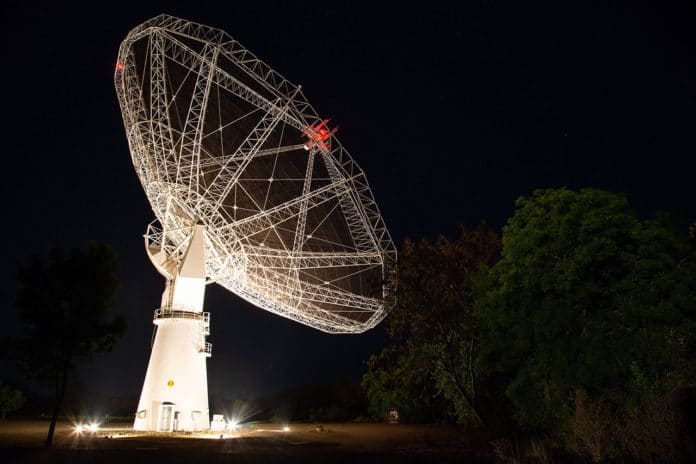Astronomers had long known that galaxies formed stars faster when the universe was young than they do today.
Using the upgraded Giant Metrewave Radio Telescope (GMRT), astronomers from the National Centre for Radio Astrophysics (NCRA-TIFR) in Pune, and the Raman Research Institute (RRI), had measured the atomic hydrogen content of galaxies seen as they were 8 billion years ago when the universe was young.
For the first time, astronomers have measured the atomic hydrogen gas content of star-forming galaxies about 8 billion years ago. Given the intense star formation in these early galaxies, their atomic gas would be consumed by star formation in just one or two billion years. It means, the universe does not have an unlimited amount of fuel to continue making stars forever.
Aditya Chowdhury, a Ph.D. student at NCRA-TIFR and the lead author of the study, said, “And, if the galaxies could not acquire more gas, their star formation activity would decline, and finally cease. The observed decline in star formation activity can thus be explained by the exhaustion of the atomic hydrogen.”
Using GMRT, astronomers searched for a spectral line in atomic hydrogen. Unlike stars, which emit light strongly at optical wavelengths, the atomic hydrogen signal lies in the radio wavelengths, at a wavelength of 21 cm, and can only be detected with radio telescopes. Unfortunately, this 21 cm signal is very weak and difficult to see from distant individual galaxies, even with powerful telescopes like the upgraded GMRT.
To overcome this limitation, the team used a technique called “stacking” to combine the 21 cm signals of nearly 8,000 galaxies that had earlier been identified with optical telescopes. This method measures the average gas content of these galaxies.
K. S. Dwarakanath of RRI, a co-author of the study, mentioned, “We had used the GMRT in 2016, before its upgrade, to carry out a similar study. However, the narrow bandwidth before the GMRT upgrade meant that we could cover only around 850 galaxies in our analysis, and hence were not sensitive enough to detect the signal.”
Jayaram Chengalur, of NCRA-TIFR, a co-author of the paper, said, “The big jump in our sensitivity is due to the upgrade of the GMRT in 2017. The new wideband receivers and electronics allowed us to use ten times more galaxies in the stacking analysis, giving sufficient sensitivity to detect the weak average 21 cm signal.”
Journal Reference:
- Chowdhury, A., Kanekar, N., Chengalur, J.N. et al. H I 21-centimeter emission from an ensemble of galaxies at an average redshift of one. Nature 586, 369–372 (2020). DOI: 10.1038/s41586-020-2794-7
